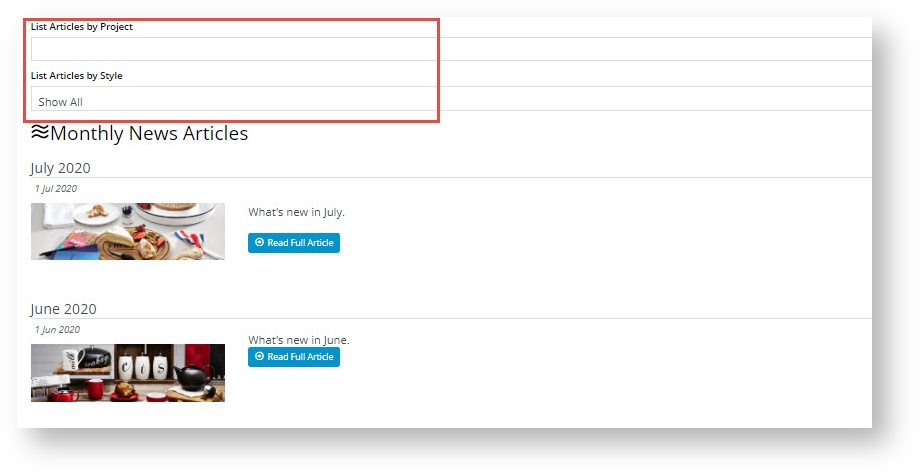...
- In the CMS, navigate to Content → Articles.
- Select the Article Type you want your new article to be grouped in.
- Click Add New Article.
- Enter a Description for your article. This will display as the article's title.
- The article's SEO URL, Browser Page Title, and SEO Description will also be auto-populated with the value you enter here. You can change any of these fields if you wish.
- The Posted Date will auto-populate with today's date. If you wish, you can also enter Start & Expiry dates for articles you'd like to display on a schedule.
- Select or upload a thumbnail image for the article. This will be the small image that displays when the list of articles is viewed.
- Select or upload the main image for the article. This will be the larger image that displays on the article detail page.
- Enter some 'teaser' text in the Summary section. This is the short-form content displayed when viewing a list of articles.
- Enter the main body of the article in the Content section. Use the WYSIWYG editing tools to update font sizes, formats, and colours based on your site's style guide.
- Article Filters allow you to display an article only to a certain segment of site users. (If you do not see this function, it has not been enabled. Please contact us to switch it on for you.) You can enter one or more Filter values: Customer Types, Customer Warehouses, Customer Codes, Bill to Customer Codes, Email Addresses or Roles. Note - this function works only with standard article widgets. . (TIP - If you do not see this function, it has not been enabled. Go to Article Feature settings and enable it.)
- Features allow you to add an article sorting tool in an article list page to help website users find relevant articles. Since they are user-defined metadata, you can create them so that they are highly meaningful to your articles. Think of a 'feature' as a category and its 'values' as subtypes of the category. As an example, suppose your business sells homewares and produces feature articles on products and designs for different rooms. A 'feature' could then be 'room type' with values such as 'bathroom', 'bedroom', 'loungeroom' etc. Articles can be tagged with particular features and values. Using the Features functionality, visitors to your site can filter for articles about decorating a particular room type, e.g., 'bathroom' or 'bedroom'.
You can add as many features as you require.
In Feature, enter a name for the category. In Value, enter the subtype of this category. Note - for the filters to display when articles are listed, see the how-to guide on Displaying Feature Filters.
What visitors to your site will see:
13. Click Save & Exit.
...


